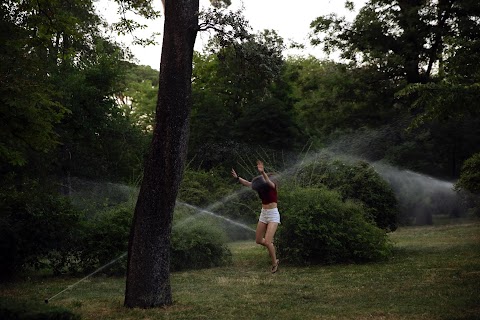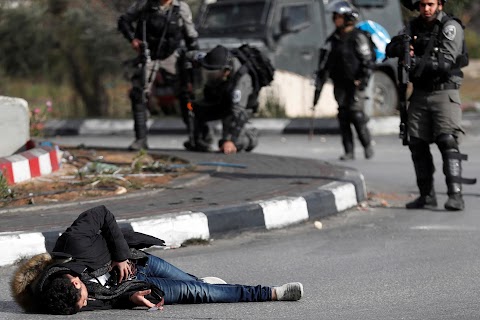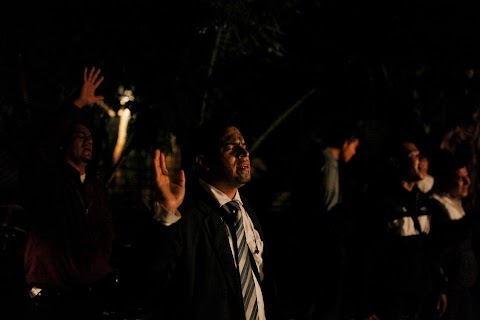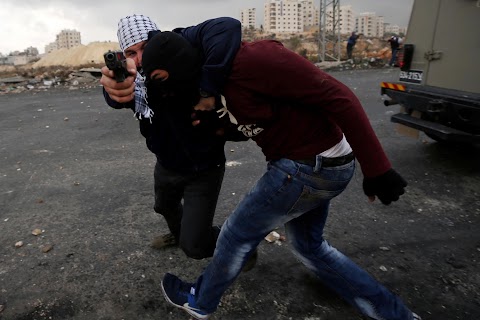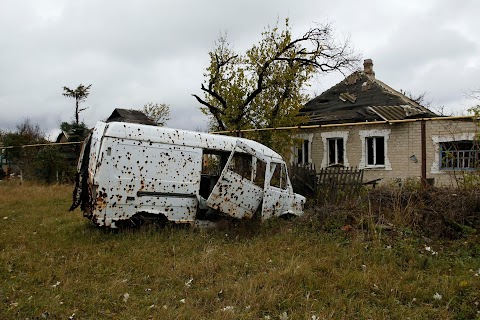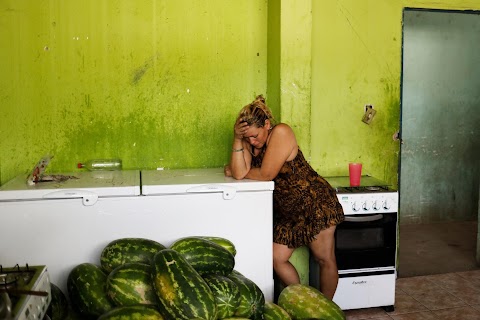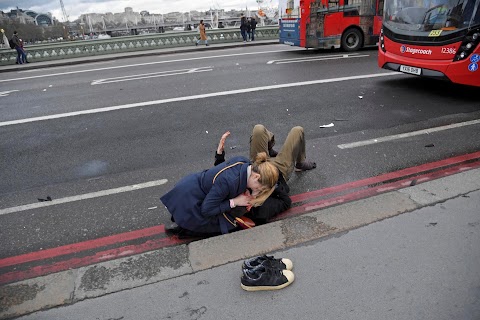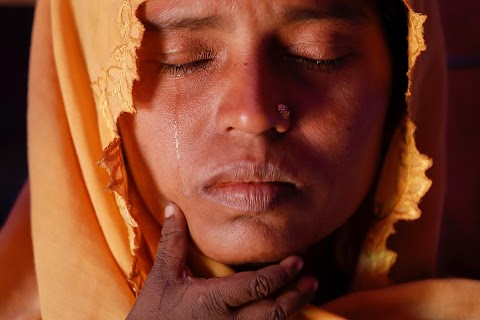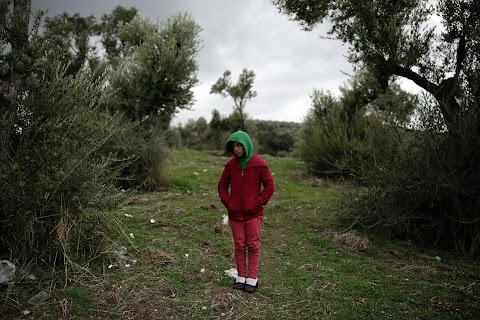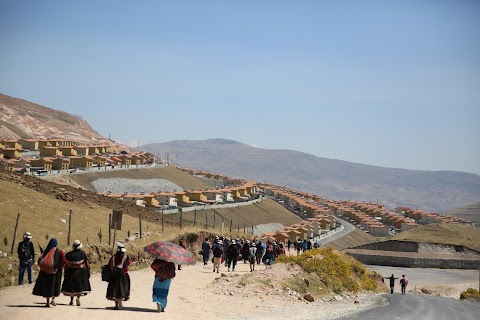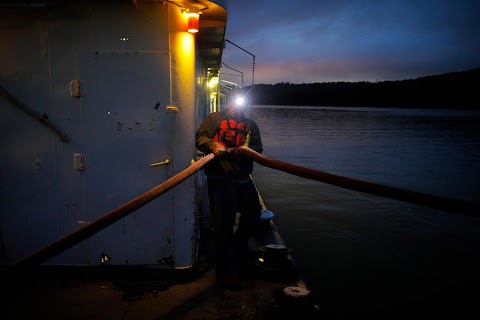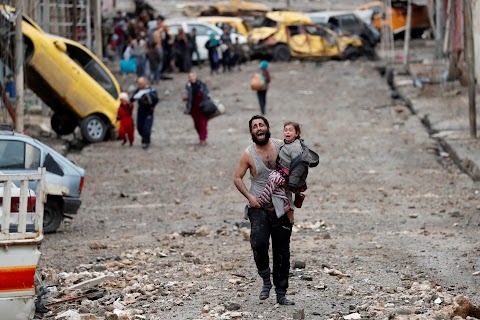
Persecuted Rohingya Muslims flee violence in Myanmar
Attacks by Rohingya Muslim insurgents on the Myanmar security forces in Rakhine state triggered a response by the army and Buddhist vigilantes so brutal a senior U.N. official denounced it as a textbook example of ethnic cleansing.
Days, weeks and months after the Aug. 25 violence, more than 600,000 Rohingya fled to Muslim Bangladesh, trekking over mountains and through forests and rice fields inundated by monsoon rain.

Many of the refugees were traumatized, exhausted and hungry, some wounded by bullets, knives or clubs, many with burns. Many women said they had been raped.
All of the refugees brought accounts of a campaign of murderous violence and arson by the Myanmar security forces and Buddhist civilians that they believed was aimed at driving them out of the country.
Mostly Buddhist Myanmar denies the accusations.

Myanmar says the rebels responsible for the Aug. 25 attacks on about 30 security posts and an army camp - the Arakan Rohingya Salvation Army - are terrorists and it is they who unleashed most of the violence and arson that reduced hundreds of Rohingya villages nestled in emerald-green rice fields to grey ash.

The Rohingya have long faced discrimination and repression in Rakhine where bad blood with ethnic Rakhine Buddhists, stemming from violence by both sides, goes back generations.
Rohingya are not regarded as an indigenous ethnic minority in Myanmar - the government even refuses to recognise the term "Rohingya", instead labelling them illegal immigrants from Bangladesh. Most have been denied citizenship under a law that links nationality to ethnicity.

They have long lived under apartheid-like conditions, with little access to even the limited opportunities in education and employment open to their Buddhist neighbours in one of Myanmar's poorest regions.
About one million Rohingya were believed to have been living in Rakhine state before the latest violence. Bangladesh was already home to 400,000 of them who had fled earlier repression.

The new arrivals, many landing by boat after being ferried across a border river, crammed into the existing refugee camps in the Cox's Bazar district, many camping out in the rain - lucky ones able to string up a piece of plastic - beside muddy tracks.
Bangladesh, one of the world’s poorest and most crowded countries, initially said the Rohingya were not welcome and ordered border guards to push them back.

But it quickly changed its stand in the face of the scale of the exodus and began gearing up, with the help of U.N. and other aid agencies, to cope with the fastest-developing refugee crisis the world had seen in years.
The crisis has raised grave doubts about Myanmar's transition from military-ruled pariah to budding democracy, and about the commitment to human rights of the democracy leader who struggled to end nearly 50 years of harsh military rule - Aung San Suu Kyi.
The generals remain in full charge of security under a constitution they drafted, even though Suu Kyi runs the government.

Analysts say Suu Kyi has to avoid angering the army and alienating supporters by being seen to take the side of a Muslim minority that enjoys little sympathy in a country that has seen a surge of Buddhist nationalism.
Nevertheless, the failure of the Nobel peace laureate to speak out forcefully in defence of the Rohingya would seem to have irreparably damaged her reputation overseas.
The international community is demanding that the Rohingya be allowed to go home in safety, and Bangladesh and Myanmar have begun talks on repatriation, but huge doubts remain about the Rohingya ever being able to return in peace to rebuild their homes and till their fields.
Slideshow

Mohammad Ponir Hossain: "I was taking pictures of exhausted refugees on the beach when I heard an autorickshaw driver shouting that a boat had capsized. I rushed to the spot and found people crying over the dead body of a child. I took a picture of Hamida, cradling the tiny pale body of her child, Abdul Masood. He appears to have died as the survivors scrambled through the crashing waves to shore. Hamida's husband Nasir Ahmed carried his son away from the crowd. The couple's other son survived the accident. These people are so desperate that they are risking their lives to escape Myanmar. The pictures show what is going on here."

Cathal McNaughton: "It was important to show the scale of the situation. To show the terrain, the earth where the Rohingya had to live. I waited for the element that would bring all this image together. The person in the bottom left of the frame holding the umbrella in the monsoon rains in an attempt to bring some respite from their situation."

Cathal McNaughton: "During my first days at the camps it was chaotic. No infrastructure was in place for the distribution of the aid that arrived throughout the day. Men would fight children for aid packages. Children would wrestle with grandmothers for rice. Eventually the security forces moved in with sufficient numbers to try and restore order. To witness people getting beaten as they scrambled for food is indescribable."

Cathal McNaughton: "What this photo doesn't convey is the deafening noise. The woman with the child was making a moaning sound which was peircing. Everyone was shouting at the relief teams to get their attention."

Cathal McNaughton: "This image sums up the first days of aid relief perfectly. Chaos. Pure desperation on people's faces as they fight for a bag of aid. Very often, they had no idea what it contained."

Cathal McNaughton: "She had been waiting since sunrise on aid to arrive. The temperature and humidity was pretty unbearable as there was no shelter. On top of this she was carrying her seriously ill child. Eventually she couldn't wait any longer, unprotected from the elements she made her way back to her shelter, empty handed."

Damir Sagolj: "Dangerously overloaded boats come from the other side of Naf River under the cover of darkness, to avoid coast guards. Everything happens very quickly and in almost total silence - the refugees first help their sick, elderly and children to get off the boats, then everyone wades through the water towards the beach. This man was carrying his relative - an elderly, exhausted woman. After reaching the beach, she was given some help and the family continued towards the relief centre in a local Islamic school in Shah Porir Dwip."

Damir Sagolj: "Overloaded boats carrying Rohingya refugees from Myanmar emerged from total darkness as they arrived to Shah Porir Dwip, a small fishing village in Bangladesh. Exhausted and terrified, refugees helped each other to the beach. From almost every picture I took that night, from the faces of women and children and from their body language, you could read the terrible fear. We can only imagine what these people have been through."

The bodies of Hindu villagers are displayed by Myanmar authorities who say they were killed by Muslim insurgents, victims of a surge of violence in someone else’s fight now playing their part in a propaganda war. Authorities found 45 Hindu villagers in mass graves in the north of Rakhine state this week, and the news has dominated Myanmar’s media coverage of a new round of violence in old strife between the state’s Buddhists and Muslims. The military flew a group of reporters from the city of Yangon to see the bodies laid out on the grass, and to hear from those who found them after information about the massacre filtered back from Hindus who have sought refuge from the violence in Bangladesh.

Damir Sagolj: "September 28 was a day of heavy rain and big waves. I was in southern Bangladesh to cover Rohingya Muslims landing in rickety boats after a dangerous sea journey from Myanmar. As I drove along Marine Drive, a beach road between the towns of Cox's Bazar and Teknaf, I thought no boatman would risk sailing in such conditions. What I didn't know was that a single doomed boat had been lost at sea overnight and was slowly making its way to shore. Just after sunset, I learned the boat carrying 80 Rohingya had capsized at Inani beach near my hotel. There were many casualties. I made it to the beach in ten minutes. The relentless rain and chaotic scenes made it difficult to find out what happened. I counted 15 bodies lying on the road near the beach. They were partially covered by plastic sheets and soggy pieces of cloth. Lalu Miya, a Rohingya survivor who I would later meet for several days to reconstruct their deadly journey, was identifying the bodies of his wife and four-year-old son. That same night more bodies were collected from the beach. In the morning, survivors and local residents gathered for a funeral. The 23 dead were buried in two mass graves in rice fields behind one of the most beautiful beaches in Bangladesh. Most of them were children.”

Damir Sagolj: "Unlike those who were crossing the Naf River under the cover of the darkness, this group of Rohingya refugees were landing at the beach of Shah Porir Dwip in the broad daylight. They were totally exhausted - I could only imagine what these people had been through before the rickety vessel brought them to Bangladesh. After landing, many just collapse. But not much later, as if awoken by survival instinct, they got back on their feet, collected children and the few possessions they brought with them, and continued by foot towards the refugee camps, a safe haven for those fleeing danger in Myanmar."

Damir Sagolj: "That morning, a group of Rohingya refugees crossed the Bay of Bengal on a rickety, wooden boat, for landings at Shah Porir Dwip, a village at the mouth of the Naf River. Most of the refugees, exhausted from the trip, collapsed after finally reaching the shores of Bangladesh. Shakira, unable to stand on her own, rested in her husband's arms for some 10-15 minute before getting up and continuing on foot towards a relief centre near-by."

Mohammad Ponir Hossain: "That morning I heard that a couple of thousand people were waiting at no-man's land and many Rohingyas were still crossing the border near Anjuman Para, Cox's Bazar. Myself and another Reuters photographer Jorge Silva set off around 11am. There are several paths so we decided to take different routes to try to ensure that at least one of us would get there. There were a few boats available at the location but members of the Bangladesh border guards didn't allow them to use them. The refugees had to swim with their children to make their way to Bangladesh."

Damir Sagolj: "October 9 was one of the busiest and most tragic days of my two week stay at the Bangladeshi side of the border. It started very early with a tip that near Shah Porir Dwip, the usual place where refugees cross the Naf River, a boat had capsized and there were casualties. It usually takes around two hours by car, boat, rickshaw and foot to reach the place and we rushed as fast as we could. Unfortunately it was all true - many refugees died and bodies, mostly children. Students of a local Islamic school volunteered to collect the remains of victims scattered along the river and brought them to their madrasa for the funeral."

Jorge Silva: "We had been expecting this massive crossing of people along the Naf River from Myanmar for some days. Before dawn I started walking through the rice field in Palang Khali. After almost two hours walking, a loud murmur indicated they were thousands of people, all wet, caked in mud, exhausted, starving, and in a state of panic. People using the very last of their energy to survive. They crossed the river during the night, paying smugglers to carry them in their boats. I got to one of the several points where they were disembarking. They had to walk across the mangrove with water up to their waists, to reach the slippery embankments of the rice field, where they would be safe and could rest. The scene was overwhelming. The sound of splashes on the water, shouting, babies and children crying, created an atmosphere of despair that is very hard to forget."

Jorge Silva: "This picture was taken after a huge group of people crossed into Bangladesh and then had to wait three days and nights for the Bangladeshi Army's permission to continue walking into the makeshift camps. The line of people seemed endless. Long hours moving slowly across the embankments of the rice field. Mothers with babies and pregnant women, elderly people with illnesses, men carrying their entire life on their shoulders. They were safe from violence, but the challenge of surviving was still waiting for them on this side of the river."

Hannah McKay: "We were standing, looking out over paddy fields and grasslands - lots of water and one thin path leading to the border with Myanmar. In the distance we could see a huge group of people. But they weren't moving. It was 4pm in the afternoon with only two hours of daylight left. So we decided to move towards them. It took us about an hour along the muddy path, meeting border guards and persuading them to let us pass. Then we saw thousands of refugees just sitting there, with more Bangladeshi border guards telling us to go back. We could see something was going on behind the crowd. So we waited for an opportunity to move closer, and that's when we saw them. The crowd was sitting on a riverbank and behind them, about three metres below, in the river itself, there were just hundreds of refugees coming across every minute. It was non-stop. There was no end to the people. People carrying babies. Elderly people being escorted through the water and mud, more than knee-deep. And we were just photographing everyone coming towards us. Then this woman appeared. She got to the point where she needed to get up to the footpath where we were. But she was exhausted. Two refugee men on her level were trying to push her up, which was when we reached out to help. Reuters photographer, Adnan Abidi, took a hand. Another photographer took another and I got her leg when she got within range. It was a case of dragging her. She lay there for a few minutes. I have no idea what happened to her. You are there trying to do your job with a camera in your hand. And then your heart overrules your head."

Hannah McKay: "I was in a centre for children photographing them singing. I could feel somebody watching me and when I turned round this little girl with extraordinary eyes was smiling at me. When I lifted my camera to take her picture she stopped smiling, as I lowered it she smiled again. It became a bit of a game and we were giggling with each other."

Almor Yhan, 59, lost one son and two nephews when their village Godam Para was attacked by Myanmar military, she said. After her son was killed, soldiers threw acid on his face and body. She only was able to recognise him because of the t-shirt he was wearing, Yhan added.

Roshid Jan, a Rohingya refugee who said she is not sure of her age, cries holding her son Muhammad Gyab at their shelter at the camp for widows and orphans inside the Balukhali camp near Cox's Bazar. Roshid Jan, who walked for 10 days with her five children to Bangladesh after soldiers burnt their village, wept when she spoke about her missing husband. The religious leader in their Phansi village in Myanmar's Rakhine state was accused of being a member of the Rohingya militants and arrested 11 months ago, she said. She had not seen him or heard about his fate since then. Now she lives with her five children and more than 230 others at camp for Rohingya widows and orphans. Damir Sagolj: "Three hills away from the nearest road, in a dusty valley of Balukhali refugee camp, a patchwork of densely packed red tents hides an ocean of grieve and pain. Some call it a red camp for its colour, others a long camp because of its shape but it's best known for those who found shelter there. "This is a widows camp", its unofficial and energetic leader, explained after I introduced myself. In about 50 tents, over 230 women and children live. There are no men. As I was listening the stories of widows and orphans, this camp shelters, I realised it's difficult to imagine a place with more sorrow than this. The camp seemed like a place in which the whole Rohingya tragedy is condensed."
